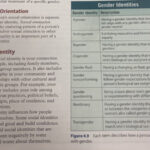Like higher organisms, plants appear able to make complex decisions. A new study shows that plants may be able to initiate a survival mechanism by aborting their own seeds to prevent parasite infestation.
Plants have previously been shown to draw alternative sources of energy from other plants. Plants influence each other in many ways and they communicate through “nanomechanical oscillations” vibrations on the tiniest atomic or molecular scale or as close as you can get to telepathic communication.
Plants exhibit intelligence with an intrinsic ability to process information from several type of stimuli that allows optimal decisions about future activities in a given environment.
Stefano Mancuso from the International Laboratory of Plant Neurobiology at the University of Florence, Italy, and his colleagues are starting to apply rigorous standards to study plant hearing (Trends in Plant Sciences, vol17, p323).
Their preliminary results indicate that corn roots grow towards specific frequencies of vibrations. What is even more surprising is their finding that roots themselves may also be emitting sound waves. For now, though, we have no idea how a plant might produce sound signals let alone how they might detect them.
Scientists from the Helmholtz Center for Environmental Research (UFZ) and the University of Gottingen have now shown from their investigations on Barberry (Berberis vulgaris), that it is is able to abort its own seeds to prevent parasite infestation.
The results, as reported in a news release, are the first ecological evidence of complex behaviour in plants. They indicate that this species has a structural memory, is able to differentiate between inner and outer conditions as well as anticipate future risks, scientists write in the renowned journal American Naturalist — the premier peer-reviewed American journal for theoretical ecology.
The European barberry or simply Barberry (Berberis vulgaris) is a species of shrub distributed throughout Europe. It is related to the Oregon grape (Mahonia aquifolium) that is native to North America and that has been spreading through Europe for years.
Scientists compared both species to find a marked difference in parasite infestation:
“A highly specialized species of tephritid fruit fly, whose larvae actually feed on the seeds of the native Barberry, was found to have a tenfold higher population density on its new host plant, the Oregon grape”, reports Dr. Harald Auge, a biologist at the UFZ.
This led scientists to examine the seeds of the Barberry more closely. Approximately 2000 berries were collected from different regions of Germany, examined for signs of piercing and then cut open to examine any infestation by the larvae of the tephritid fruit fly (Rhagoletis meigenii).
This parasite punctures the berries in order to lay its eggs inside them. If the larva is able to develop, it will often feed on all of the seeds in the berry.
A special characteristic of the Barberry is that each berry usually has two seeds and that the plant is able to stop the development of its seeds in order to save its resources. This mechanism is also employed to defend it from the tephritid fruit fly. If a seed is infested with the parasite, later on the developing larva will feed on both seeds. If however the plant aborts the infested seed, then the parasite in that seed will also die and the second seed in the berry is saved.
When analysing the seeds, the scientists came across a surprising discovery: “the seeds of the infested fruits are not always aborted, but rather it depends on how many seeds there are in the berries”, explains Dr. Katrin M. Meyer, who analysed the data at the UFZ and currently works at the University of Goettingen.
If the infested fruit contains two seeds, then in 75 per cent of cases, the plants will abort the infested seeds, in order to save the second intact seed. If however the infested fruit only contains one seed, then the plant will only abort the infested seed in 5 per cent of cases.
The data from fieldwork were put into a computer model which resulted in a conclusive picture. Using computer model calculations, scientists were able to demonstrate how those plants subjected to stress from parasite infestation reacted very differently from those without stress.
“If the Barberry aborts a fruit with only one infested seed, then the entire fruit would be lost. Instead it appears to ‘speculate’ that the larva could die naturally, which is a possibility. Slight chances are better than none at all”, explains Dr. Hans-Hermann Thulke from the UFZ.
“This anticipative behaviour, whereby anticipated losses and outer conditions are weighed up, very much surprised us. The message of our study is therefore that plant intelligence is entering the realms of ecological possibility.”
But how does the Barberry know what is in store for it after the tephritid fruit fly has punctured a berry? It is still unclear as to how the plant processes information and how this complex behaviour was able to develop over the course of its evolution.
The Oregon grape that is closely related to the Barberry has been living in Europe for some 200 years with the risk of being infested by the tephritid fruit fly and yet it has not developed any such comparable defence strategy.
These new insights shed some light on the underestimated abilities of plants, while at the same time bringing up many new questions.
By April McCarthy, Prevent Disease;
Plants Exhibit The Same Senses As Humans – They See, Touch, Smell, Hear and Even Taste
Have you ever wondered what the grass under your feet feels, what an apple tree smells, or a marigold sees? Plants stimulate our senses constantly, but most of us never consider them as sensory beings too. In fact senses are extremely important to plants.
Whatever life throws at them, they remain rooted to the spot – they cannot migrate in search of food, escape a swarm of locusts or find shelter from a storm. To grow and survive in unpredictable conditions, plants need to sense their environment and react accordingly.
Some people may not be comfortable describing what plants do as seeing, hearing, smelling, tasting and touching. They certainly lack noses, eyes, ears, mouths and skin, but in what follows, I hope to convince you that the sensory world of plants is not so very different from our own.
Plants have scientifically been show to draw alternative sources of energy from other plants. Plants influence each other in many ways and they communicate through “nanomechanical oscillations” vibrations on the tiniest atomic or molecular scale or as close as you can get to telepathic communication. However, their sense and communication are measureable in very much the ways as are humans.
Sight
What do plants see? The obvious answer is that, like us, they see light. Just as we have photoreceptors in our eyes, they have their own throughout their stems and leaves.
These allow them to differentiate between red and blue, and even see wavelengths that we cannot, in the far red and ultraviolet parts of the spectrum. Plants also see the direction light is coming from, can tell whether it is intense or dim and can judge how long ago the lights were turned off.
Studies have shown that plants bend to the light as if hungry for the sun’s rays, which is exactly what they are. Photosynthesis uses light energy to turn carbon dioxide and water into sugar, so plants need to detect light sources to get food. We now know they do this using phototropins – light receptors in the membranes of cells in the plant’s tip.
Phototropins are sensitive to blue light. When they sense it, they initiate a cascade of signals that ends up modulating the activity of the hormone auxin. This causes cells on the shaded side of the stem to elongate, bending the plant towards the light.
Plants see red light using receptors in their leaves called phytochromes. A phytochrome is a sort of light-activated switch: when irradiated with red light, it changes its conformation so that it is primed to detect far-red light, and when irradiated by far red it changes back to the form that is sensitive to red light.
This has two key functions.
It allows plants to “turn off” at the end of the day – because far-red light predominates at sunset – and wake up again next day when the sun is high enough in the sky for red light to switch their phytochromes back on.
It also allows them to sense when they are in the shade. Chlorophyll, the main pigment for photosynthesis, absorbs red but not far-red light, so when a plant is being crowded out by other plants it will see more far-red light than when it is growing in full sunshine. This directly influences the level of activated phytochromes, causing the plant to grow rapidly to get better exposure to the sun.
Phototropins and phytochromes are completely different from the photoreceptors found in animals’ eyes, although all consist of a protein connected to a chemical dye that absorbs the light. There is one type of photoreceptor, however, that we share.
During daylight hours, cryptochromes within cells detect blue and UV light, using this signal to set an organism’s internal clock or circadian rhythms. In plants, this clock regulates many processes, including leaf movements and photosynthesis. So sight even helps plants tell the time.
Touch
Plants live in a very tactile world. Branches sway in the wind, insects crawl across leaves, and vines search out supports to hang on to. Plants are even sensitive to hot and cold, allowing them to respond to the weather by doing things like changing their growth rates and modulating their use of water.
Simply touching or shaking a plant is often enough to reduce its growth, which is why vegetation in windswept locations tends to be stunted.
All plants can sense mechanical forces to some degree, but tactile sensitivity is most obvious in the carnivorous Venus flytrap. When a fly, beetle or even a small frog crawls across its specially adapted leaves, these spring together with surprising force, sandwiching the unsuspecting prey and blocking its escape.
The Venus flytrap (pictured) knows when to shut because it feels its prey touching large hairs on the two lobes of the trap. But it won’t just snap shut with any stimulation – at least two hair touches must occur within about 20 seconds of each other. This helps to ensure that the prey is the ideal size and will not be able to wiggle out of the trap once it closes.
The mechanism by which the Venus flytrap feels its prey is uncannily similar to the way you feel a fly crawling on your arm. Touch receptors in your skin sense the insect and activate an electrical current that passes along nerves until it reaches your brain, which registers the fly’s presence and instigates a response.
Likewise, when a fly rubs up against the Venus flytrap’s hairs, it induces a current that radiates throughout the leaves. This activates ion channels in the cell membrane and the trap springs shut, all in less than one-tenth of a second.
Although most plants do not react this fast, they feel a mechanical stimulus in the same way. What’s really fascinating is that even at the level of individual cells, plants and animals use similar proteins to feel things.
These mechanoreceptors are embedded in the cell membranes and, when stimulated by mechanical pressure or distortion, they allow charged ions to cross the membrane. This creates a difference in electrical charge between the inside and the outside of the cell, which generates a current.
Unlike us, plants lack a brain to translate these signals into sensations with emotional connotations. Nevertheless, their sensitivity to touch allows them to respond to their changing environments in specific and appropriate ways.
Smell
The parasitic vine called dodder is the sniffer dog of the vegetable world. It contains almost no chlorophyll – the pigment that most plants use to make food – so to eat it must suck the sugary sap from other plants.
Dodder uses olfaction to hunt down its quarry. It can distinguish potential victims from their smell, homing in on its favourites and also using scents emitted by unhealthy specimens to avoid them (Science, vol 313, p 1964).
Dodder is exceptionally sensitive to odours, but all plants have a sense of smell. In animals, sensors in the nose recognise and bind with molecules in the air. Plants also have receptors that respond to volatile chemicals. What do they smell?
Back in the 1920s, researchers with the US Department of Agriculture demonstrated that treating unripe fruit with ethylene gas would induce it to ripen. Since then, it has become apparent that all ripening fruits emit ethylene in copious amounts, can smell it, and respond by ripening.
This ensures not only that a fruit ripens uniformly but also that neighbouring ones ripen together, producing more ethylene and leading to a ripening cascade. Coordinated ripening is important because it attracts animals to eat the fruit and disperse the seeds. Ethylene is a plant hormone that regulates many processes, so being able to smell it has other advantages too, such as in the coordination of leaf-colour changes in the autumn.
Above all, however, smell allows plants to communicate. Research in the 1980s showed that healthy trees in the vicinity of caterpillar-infested ones were resistant to the pests because their leaves contained chemicals that made them unpalatable.
Other trees isolated from the infestation did not produce these chemicals, so it seemed that the attacked trees had sent an airborne pheromonal message that primed healthy trees to prepare for imminent attack. We now know that many volatile chemicals are involved.
Taste
Our senses of smell and taste are intimately entwined. Conceptually, smells enhance or dampen tastes sensed by our tongues. Physically, our mouths and nasal cavities are connected so that our noses can pick up smells released as food is chewed. The major difference is that smell deals with volatile chemicals and taste senses soluble chemicals.
The two senses are also connected in plants. This is best seen in their responses to attacks by insects or pathogenic bacteria. As we have already seen, plants under attack emit a variety of volatile chemicals to warn their neighbours, but one called methyl jasmonate is particularly important.
This is where taste comes in. Although methyl jasmonate is a gas and so an effective airborne messenger molecule, it is not very active in plants. Instead, when it diffuses in through the stomata – the pores in the surface of the leaf – it gets converted into the water-soluble jasmonic acid.
This attaches to a specific receptor in the cells and triggers the leaf’s defence responses. Just as our tongues contain receptors for different taste molecules in food, plants contain receptors for different soluble molecules, including jasmonic acid.
As taste involves soluble chemicals, it is perhaps not surprising that much of a plant’s sense of taste is in its roots, surrounded as they are by soil and water. A classic experiment reveals that plants can use underground chemical messages to recognise their relatives nearby (New Scientist, 26 March 2011, p46).
There is also root-to-root communication between unrelated neighbours. When a row of plants was subjected to drought conditions, it took just one hour for the message to travel to plants that were five rows away, causing them to close their stomata in preparation for a lack of water (PLoS One, vol6, pe23625).
Other plants that were just as close but not connected by their roots failed to react. So the signal must have been passed from root to root, probably taking the form of a soluble molecule.
Hearing
You have probably heard conflicting stories about the musical preferences of plants. Some people are convinced they flourish when exposed to classical compositions, others believe that heavy metal or bebop does the trick.
Strangely, plants’ musical tastes show a remarkable congruence with those of the humans reporting them.
Although research in this area has a long history, most of it is not very scientific and, if you think about it, experiments studying music and plants were doomed from the start. We don’t judge a plant’s vision by showing it an eye chart and asking it to read the bottom line. Olfaction is not measured by its ability to differentiate between Chanel No.5 and Old Spice.
Music is not ecologically relevant for plants, so we shouldn’t expect them to be tuned in to it. But there are sounds that, at least theoretically, it could be advantageous for them to hear.
These include the vibrations produced by insects, such as a bee’s buzz or an aphid’s wing beat, and minuscule sounds that might be created by even smaller organisms.
Plants might even benefit from the ability to detect certain sounds produced by other plants. For example, researchers at the Institute of Plant Sciences in Bern, Switzerland, recently recorded ultrasonic vibrations emanating from pine and oak trees during a drought (New Phytologist, vol179, p1070), perhaps signalling to other trees to prepare for dry conditions.
Stefano Mancuso from the International Laboratory of Plant Neurobiology at the University of Florence, Italy, and his colleagues are starting to apply rigorous standards to study plant hearing (Trends in Plant Sciences, vol17, p323).
Their preliminary results indicate that corn roots grow towards specific frequencies of vibrations. What is even more surprising is their finding that roots themselves may also be emitting sound waves. For now, though, we have no idea how a plant might produce sound signals let alone how they might detect them.
If this research pans out, then we will know that plants have the same five senses as animals. Either way, there can be no doubt that plants are sensually aware organisms in their own right.
By Daniel Chamovitz, Prevent Disease;
About authors: April McCarthy is a community journalist playing an active role reporting and analyzing world events to advance our health and eco-friendly initiatives.
Daniel Chamovitz is director of the Manna Center for Plant Biosciences at Tel Aviv University, Israel.

















